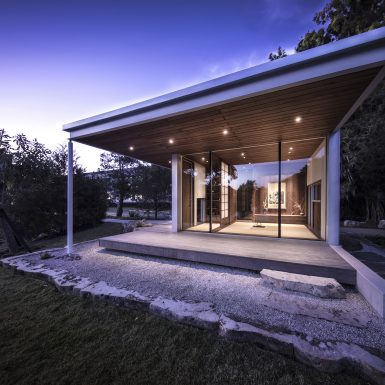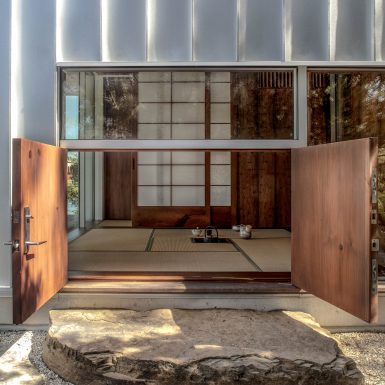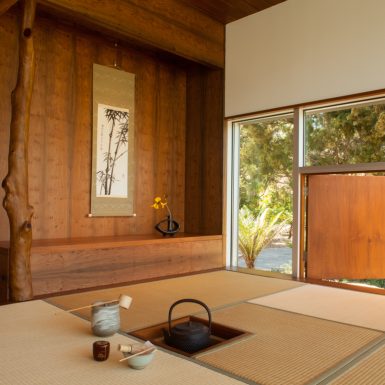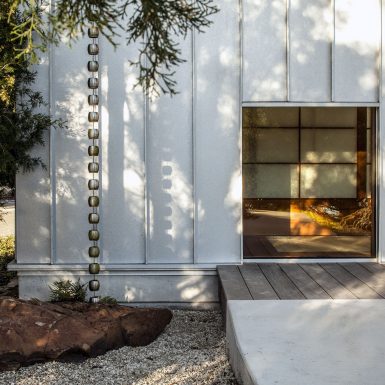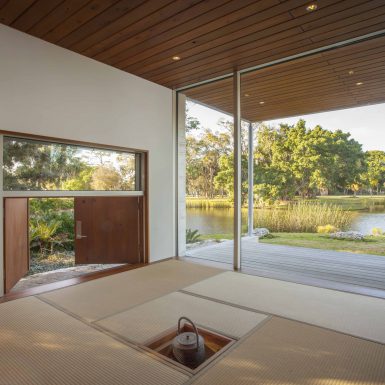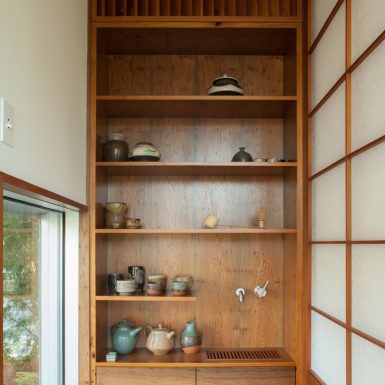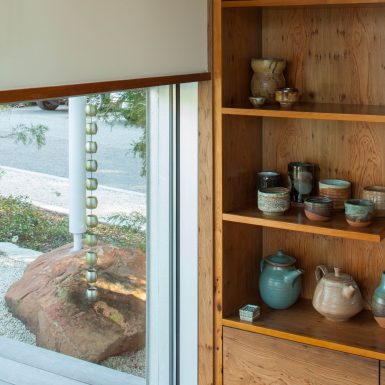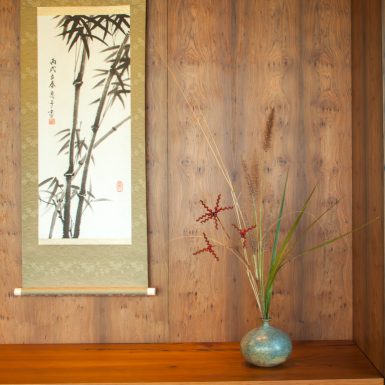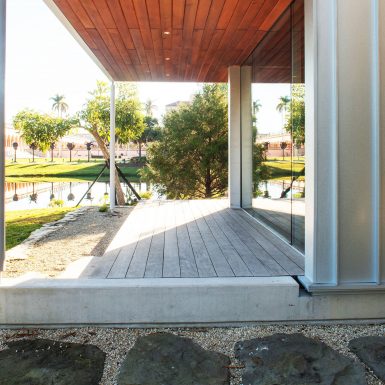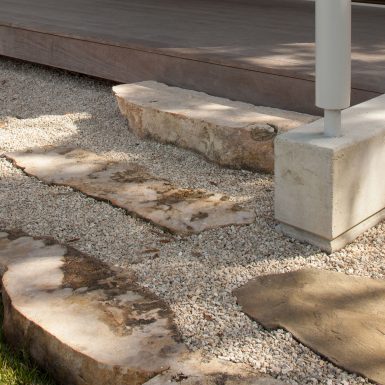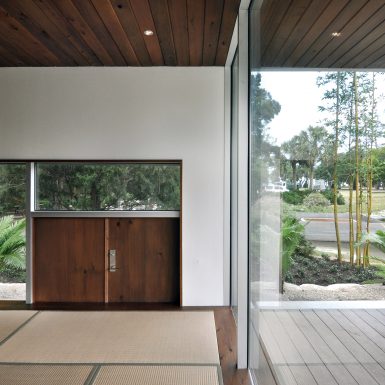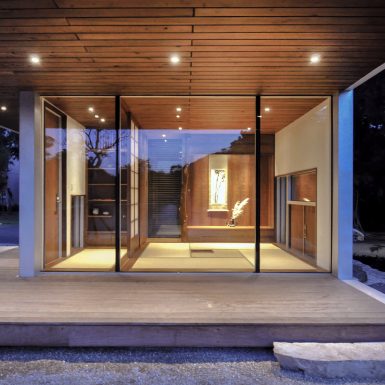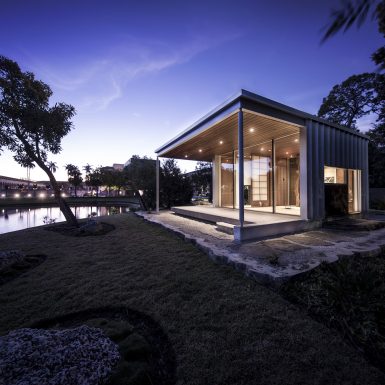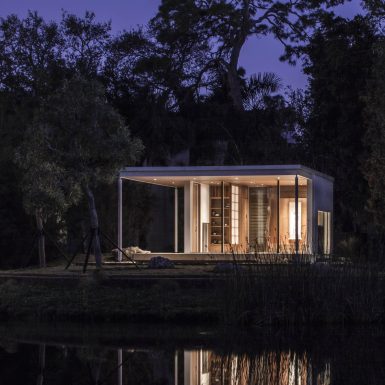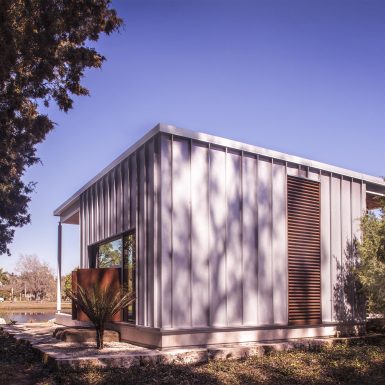The Nancy L. Ellis Teahouse is an educational exhibit to display and perform traditional Japanese tea ceremonies. The starting point for our design solution was to research and understand not only the architectural elements of a traditional teahouse, but also the philosophical and cultural histories of those elements, and how they interact, support, and influence the preparation and service of tea.
In the 15th century a Japanese monk named Marata Juko endeavored to relink the preparing of tea to its spiritual roots, stripping away all the unnecessary accouterments introduced when serving tea became popular with the aristocracy. Instead of fine china he introduced local pottery. Instead of large teahouses set prominently on the public square, he advocated for humble indigenous structures set away from the bustle of public life in countryside gardens. He ritualized the ceremony in such a way that the movement of the body and the architecture of the teahouse and garden became a unified element gathered from its own environment. The architecture of tea houses across Japan began to vary greatly based on local customs and available materials.
When we were commissioned to design a tea house for the Ringling Museum we began with this question. What does a tea house in Sarasota look like? What does it draw from? The program requirements from our client dictated that the most formal tea ceremonies might be performed there. So our challenge was to marry a traditional tea ceremony to an indigenous Southwest Florida architecture that must meet wind loading, flood, energy, and accessibility requirements.
To accomplish this we began a regional search for austere structures built with common materials. Ultimately we drew inspiration from the materiality of the galvanized metal fishing shacks of Pine Island and from Paul Rudolph’s Walker Guest House. Many of the tenets of tea house design are sympathetic to those of the Sarasota School- direct forms, openness, and a connection with the landscape. For the inside of the teahouse we sourced local materials that were expressive of the regions history. The Interior wood, for example, is river recovered cypress logs felled at the turn of the century, capturing a pre-statehood history in its rings.



